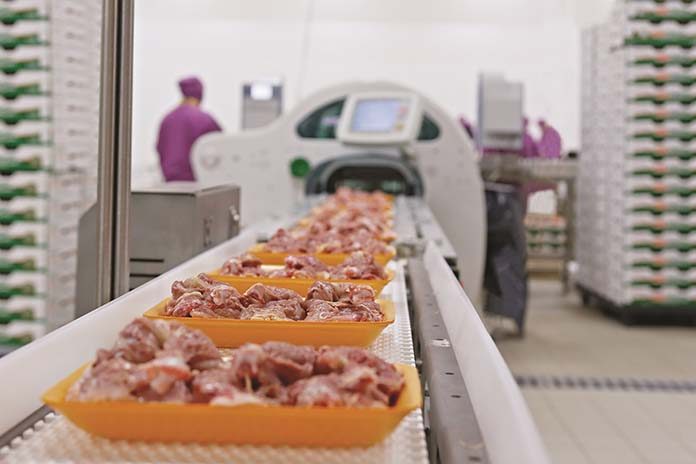
The USPOULTRY Foundation announce the completion of a funded research project at Clemson University in Clemson, S.C., in which Dr. Kay Cooksey and other researchers found persistent Salmonella strains on processing equipment. The research on “Evaluation of risk factors associated with Salmonella spp. contamination in post-chilled carcasses and secondary processing products in a poultry plant” was made possible in part by an endowing Foundation gift from Perdue Farms and is part of the Association’s comprehensive research program encompassing all phases of poultry and egg production and processing.
Dr. Kay Cooksey and colleagues from Clemson University evaluated poultry parts (cut pieces) coming out of second unit processing to see if that product had an increased Salmonella prevalence compared with whole poultry carcasses processed in the same plant.
The prevalence of Salmonella in poultry and poultry products is a source of concern for the poultry industry, consumers and regulatory agencies. Most consumers buy their poultry in parts (legs, drumsticks, wings, etc.), and not whole carcasses. The rate of Salmonella contamination has been shown to be higher in parts as compared to whole carcasses. The intent of this project was to evaluate poultry parts (cut pieces) coming out of second unit processing to see if that product has increased Salmonella prevalence compared with whole poultry carcasses processed in the same plant. The main goal of this study was to evaluate potential contamination patterns and track the origin of Salmonella on the second processed (cut) poultry parts.
The project had the three objectives: 1) Identify risk factors leading to Salmonella contamination in post-chilled whole poultry carcasses and poultry parts; 2) Identify high-risk areas or steps during processing that promote Salmonella dissemination on cut chicken pieces during second unit processing; 3) Use the findings to create a model for predicting cross-contamination during second unit processing.
Data collected showed that contamination patterns are different on skin-covered chicken parts versus chicken parts with no skin. Findings suggest that skin-covered chicken parts promote the presence and survival of Salmonella spp., especially in suboptimal concentrations of disinfectant. This allows for the increased possibility of cross-contamination. Assessments of the collected strains suggested the presence of ‘persisters’, or Salmonella strains strongly associated with environmental samples that survive the sanitation process and are present on equipment for an extended time. Poultry parts resulting from second processing had more Salmonella than incoming carcasses, but the source appeared to be the processing equipment. Results indicate that the predominant Salmonella patterns and isolates are significantly associated with the persistent strains on the processing line.
The solution seems to reside with stringent environmental sampling plans and appropriate follow-up actions that can eliminate persistent strains. When antimicrobial treatment such as chlorine is applied, chlorine concentration and contact time with the poultry carcass are important factors to eliminate Salmonella on carcasses and parts.
Copyright © 2019 U.S. Poultry & Egg Association

















